Key Takeaways
-
Winged Ants are Reproductive: Also known as alates, winged ants emerge to mate and establish new colonies—key to colony expansion.
-
Nuptial Flights: These typically happen after warm, humid weather in late spring or summer and mark the start of new colony formation.
-
Not All Winged Ants Indicate Problems: A few indoor sightings are usually harmless, but frequent or large numbers may reveal a hidden nest.
-
Ants vs. Termites: Ants have narrow waists and uneven wings; termites have broad waists and wings of equal size—knowing the difference helps with control.
-
Prevent Infestations Early: Seal entry points, check for moisture, and inspect regularly to stop infestations before they grow.
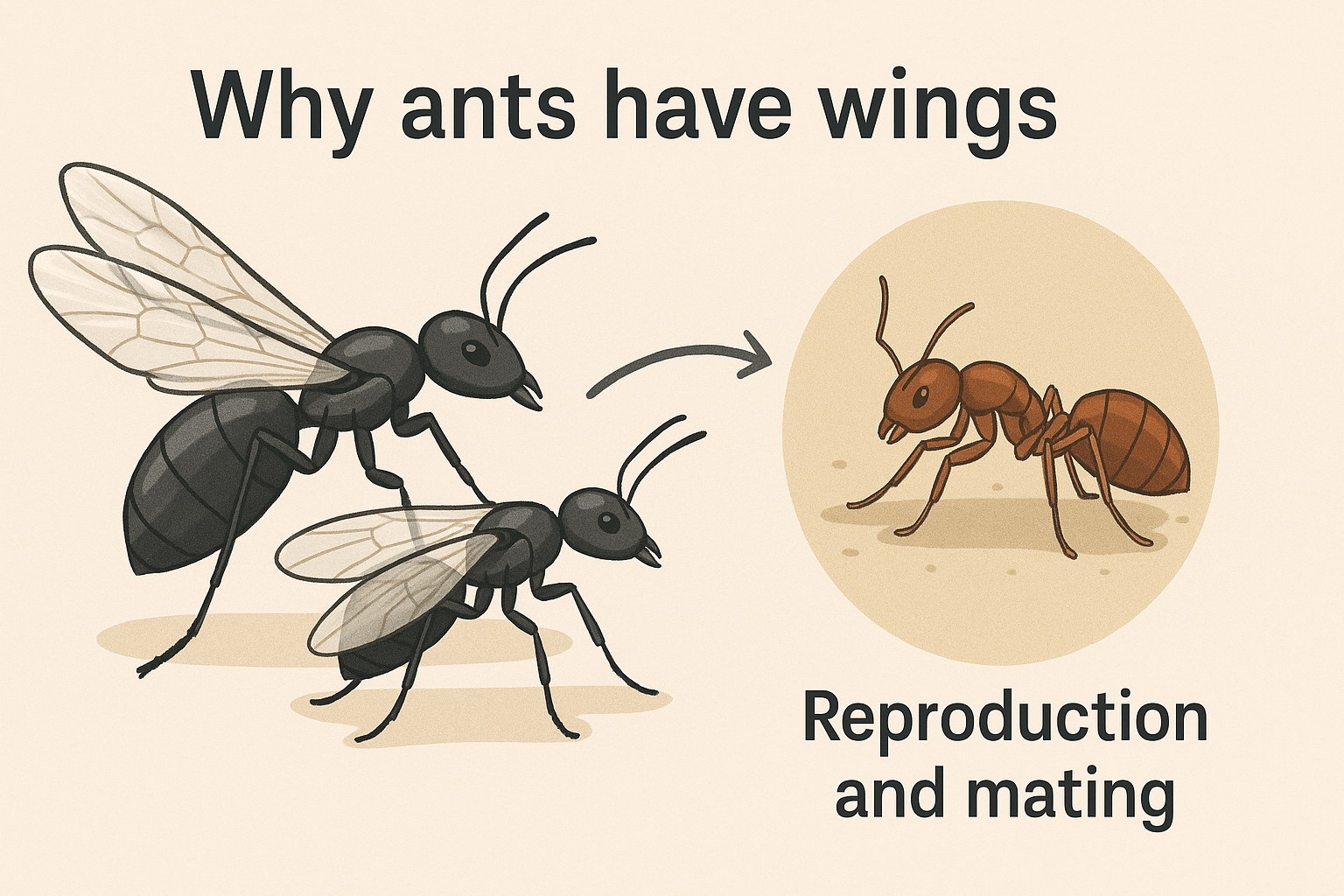 Have you ever noticed ants suddenly sprouting wings and buzzing around your patio or kitchen lights, especially after a warm summer rain? Honestly, it’s pretty weird, right?
Ants are some of the most fascinating insects in the world, and you may have noticed that some of them have wings. But don’t worry—you’re not alone, and you’re definitely not imagining things. If you’ve ever seen a swarm of flying ants, you might wonder why some ants have wings while others don’t.
This article explains why some ants develop wings, their role in reproduction through nuptial flights, and how to identify flying ants versus termites. It also provides practical steps for prevention and handling infestations effectively.
If flying ants are suddenly appearing around your home, it might signal an infestation nearby. Don’t wait until it’s a bigger issue—schedule your Free Pest Inspection Today and let our experts help keep your home ant-free!
Have you ever noticed ants suddenly sprouting wings and buzzing around your patio or kitchen lights, especially after a warm summer rain? Honestly, it’s pretty weird, right?
Ants are some of the most fascinating insects in the world, and you may have noticed that some of them have wings. But don’t worry—you’re not alone, and you’re definitely not imagining things. If you’ve ever seen a swarm of flying ants, you might wonder why some ants have wings while others don’t.
This article explains why some ants develop wings, their role in reproduction through nuptial flights, and how to identify flying ants versus termites. It also provides practical steps for prevention and handling infestations effectively.
If flying ants are suddenly appearing around your home, it might signal an infestation nearby. Don’t wait until it’s a bigger issue—schedule your Free Pest Inspection Today and let our experts help keep your home ant-free!
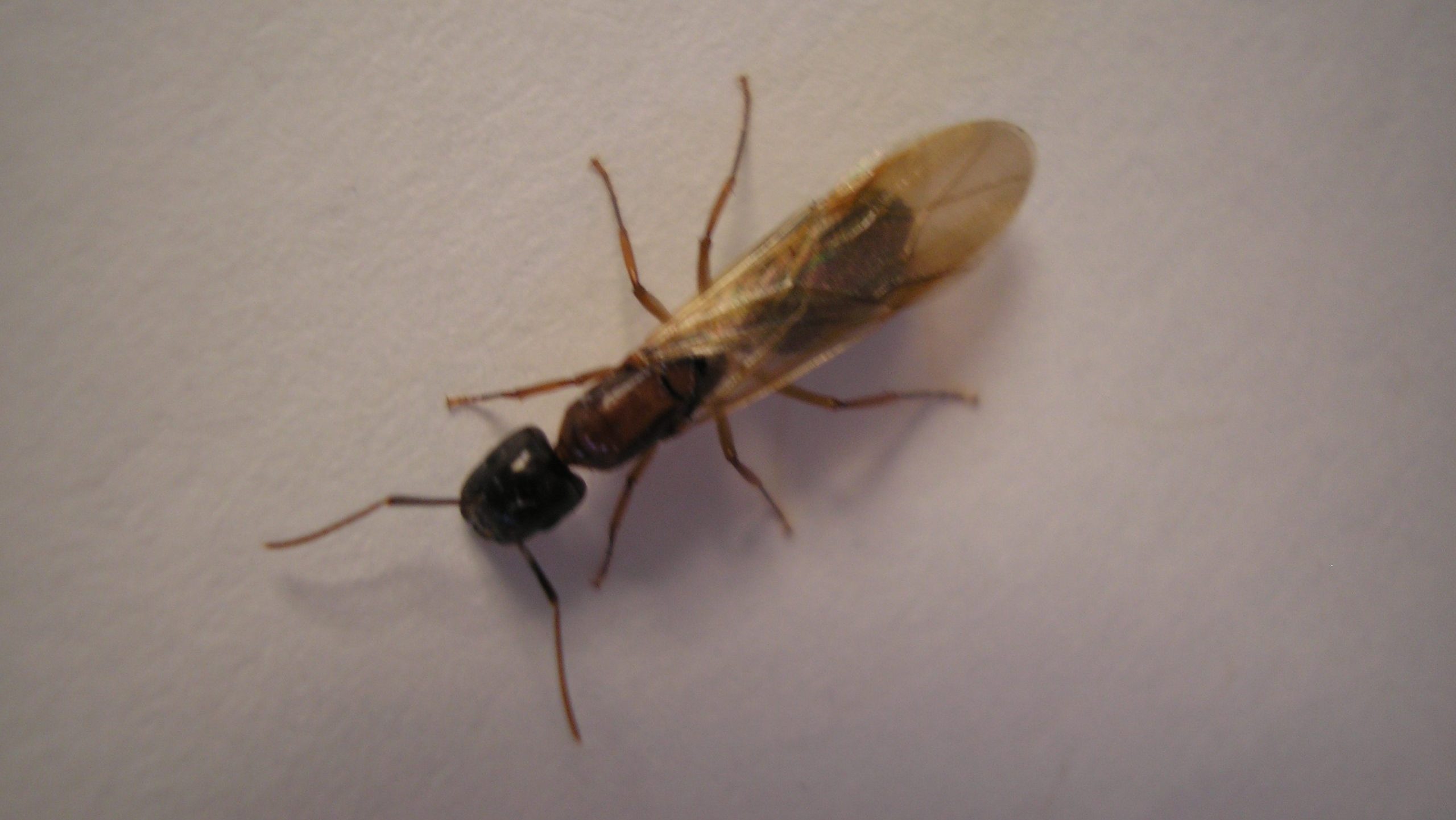

Not getting a solution?
Get your free pest control estimate today!What Are Winged Ants?
Winged ants, also known as alates, are reproductive ants that are responsible for starting new colonies. Unlike worker ants, which remain wingless throughout their lives, alates develop wings as part of their reproductive cycle. These winged ants include both males (drones) and virgin queens.Why Do Some Ants Have Wings?
You know what? Ants with wings aren’t some exotic new species invading your backyard. The presence of wings in certain ants is directly tied to their role in the colony’s reproduction and survival. Imagine it like this: a massive ant party in the sky, usually triggered by warm, humid conditions after a good spring or summer rain. Hundreds—even thousands—of ants from multiple colonies swarm simultaneously. Here’s why ants develop wings: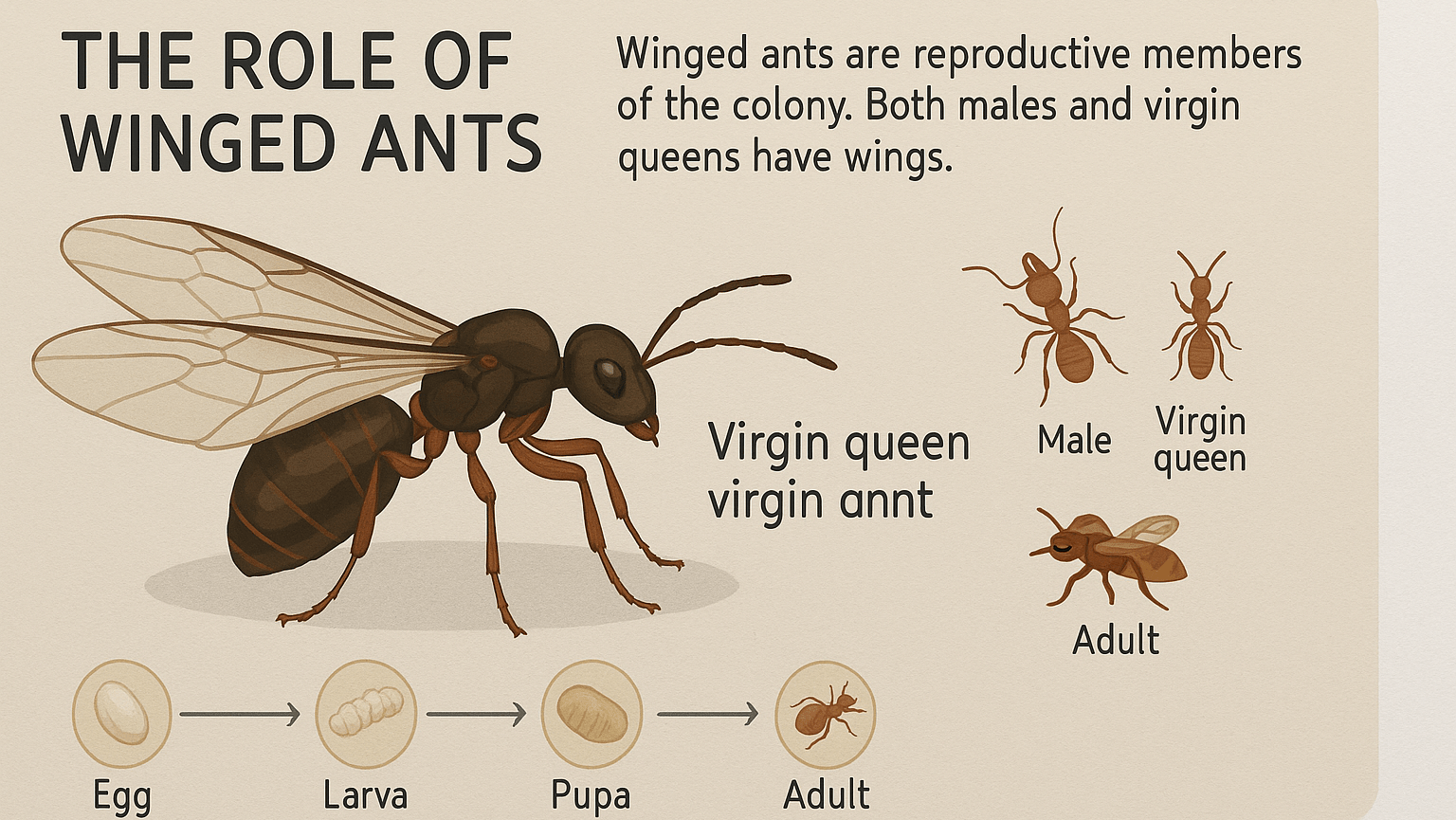
Role of Winged Ants
-
Reproduction: When an ant colony reaches a certain size and maturity, it produces winged ants, called alates. Winged ants are the reproductive members of the colony. They participate in the nuptial flight, where they mate in mid-air before establishing new colonies.
-
Dispersal: Wings allow these ants to travel away from their parent colony, meeting new ants, reducing competition for resources and increasing the species’ survival chances.
-
Short-Lived Function: Once mating is complete, queens shed their wings and go on to establish start a new colony, while male ants die shortly after mating.
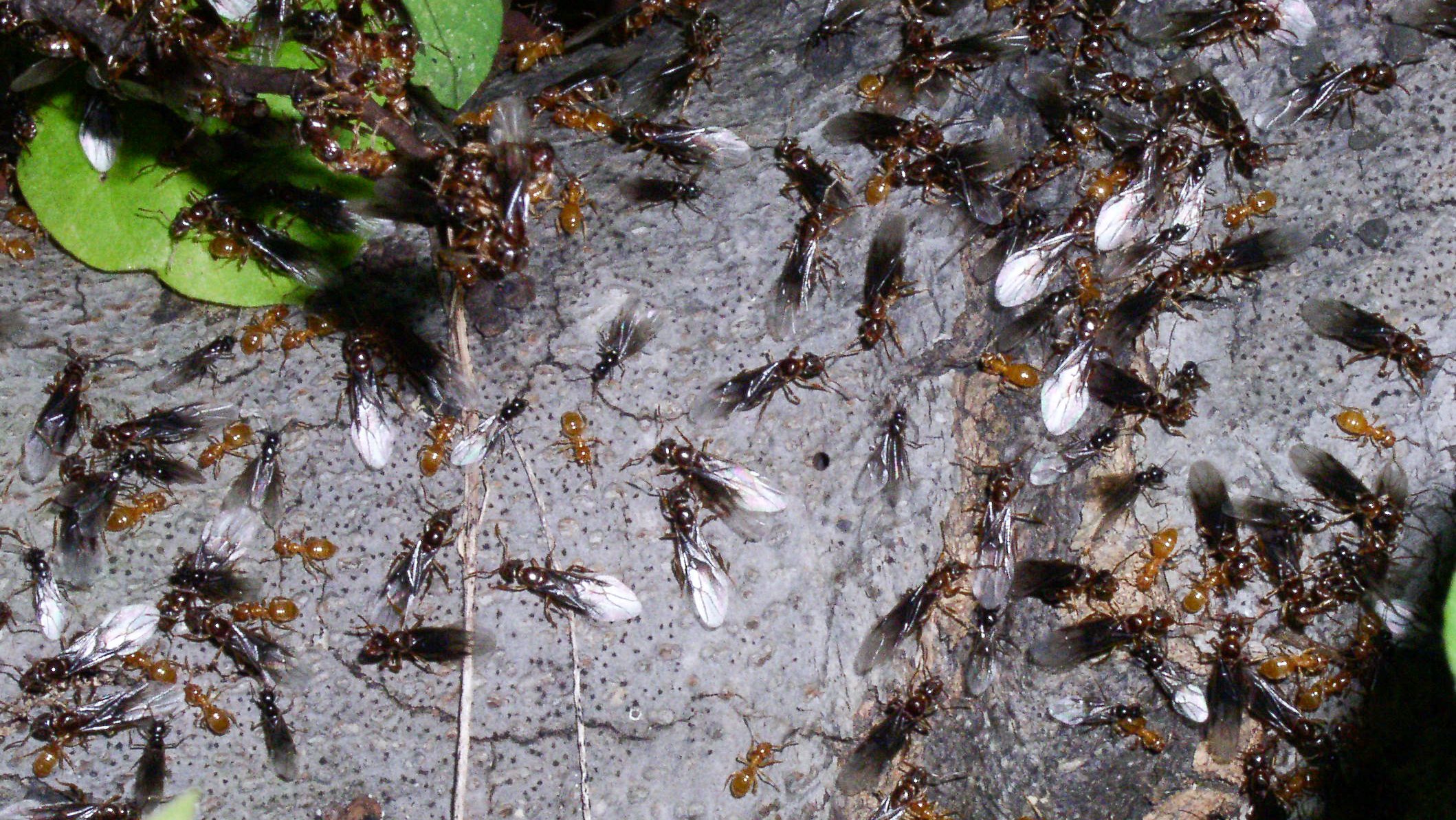
The Nuptial Flight: When and Why It Happens
Flying ants have a pretty predictable schedule. You’ll mostly spot them during spring and early summer, especially right after those warm, humid days and fresh rains. The nuptial flight is a crucial event in the life cycle of winged ants. Carpenter ants, pavement ants—each has its favorite season. Sometimes, the timing is so perfectly synced that people in some regions even celebrate “flying ant day.” It typically occurs under specific environmental conditions:Nuptial Flight of Winged Ants
-
Warm and Humid Weather: Flights often happen after a rain shower when the air is moist.
-
Seasonal Timing: In many regions, nuptial flights occur in late spring and summer.
-
Mass Emergence: Large numbers of winged ants take flight simultaneously to increase the chances of successful mating.
Common Ant Species with Wings
-
Carpenter Ants (Camponotus spp.): Large black ants often mistaken for termites.
-
Pavement Ants (Tetramorium caespitum): Small brown ants commonly found in urban areas.
-
Fire Ants (Solenopsis invicta): Aggressive ants known for their painful stings.
-
Black Garden Ants (Lasius niger): Frequently seen swarming in large numbers during summer.
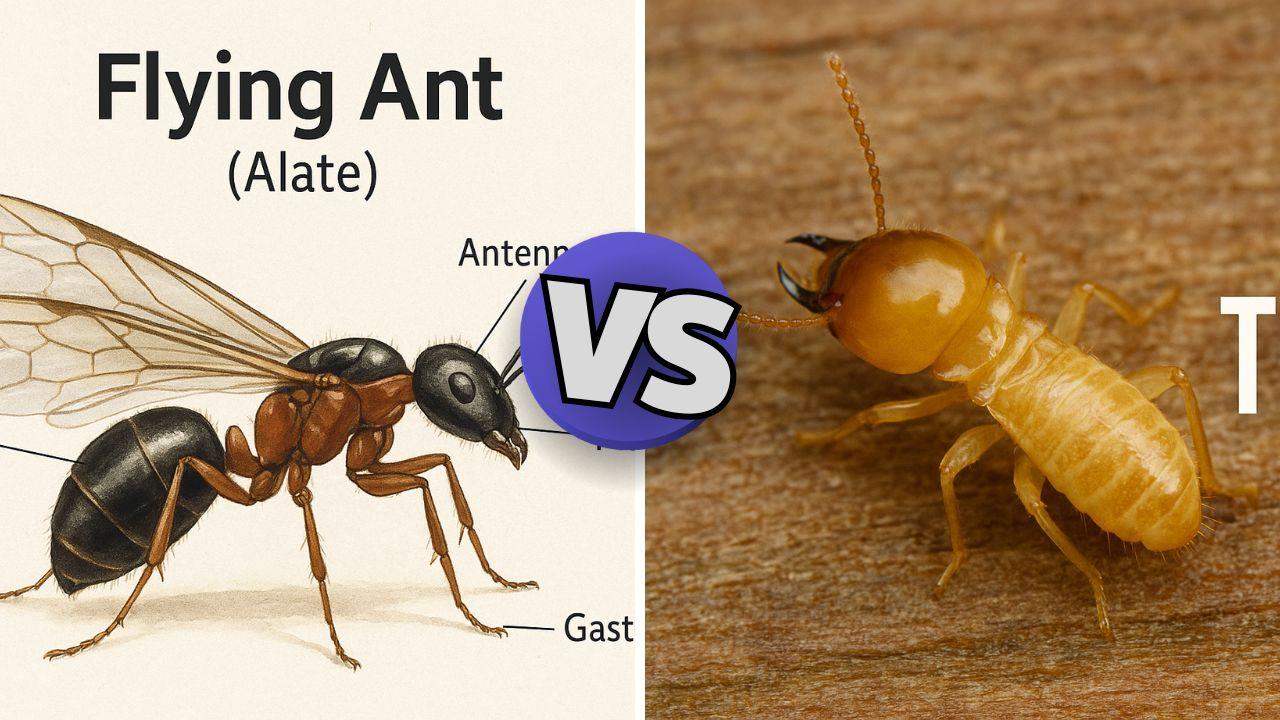
Flying Ants vs. Termites: How to Tell the Difference
When you see winged insects around your home, panic can set in pretty quickly because, let’s be real, nobody wants termites munching away at their house. Luckily, ants and termites look different if you know what to check for:| Feature | Flying Ants | Termites |
|---|---|---|
| Waist | Narrow, Pinched, defined | Broad, straight, Thicker |
| Antennae | Bent or elbowed | Straight (resembling strings of tiny beads) |
| Wings | Unequal in size (front wings larger and rear wings smaller) | Have Four Wings equal in size |
| Body Color | Dark brown or black | Light-colored |
Are Winged Ants a Problem?
- Seeing a few winged ants indoors isn’t necessarily a cause for concern. They’re focused solely on reproduction—not biting or stinging. But here’s the kicker: the specific type of ant matters. However, if you notice a large number of them inside your home, it may indicate an infestation. It’s not about the winged ants themselves causing harm, but what their presence implies. Here’s what to look out for:
-
Just a Few Indoors: A handful of winged ants may simply have flown in from outside. These are usually harmless and will die off without establishing a colony.
-
Large Indoor Swarms: A significant number of flying ants indoors likely indicates a mature nest inside your walls or flooring—a strong sign of infestation.
-
Piles of Discarded Wings: Winged queens shed their wings after mating. Finding these wings is clear evidence of ant activity and potential nesting indoors.
-
Wood Damage: If carpenter ants are the culprits, their nests could be hidden within walls, causing structural damage without visible bites or stings.
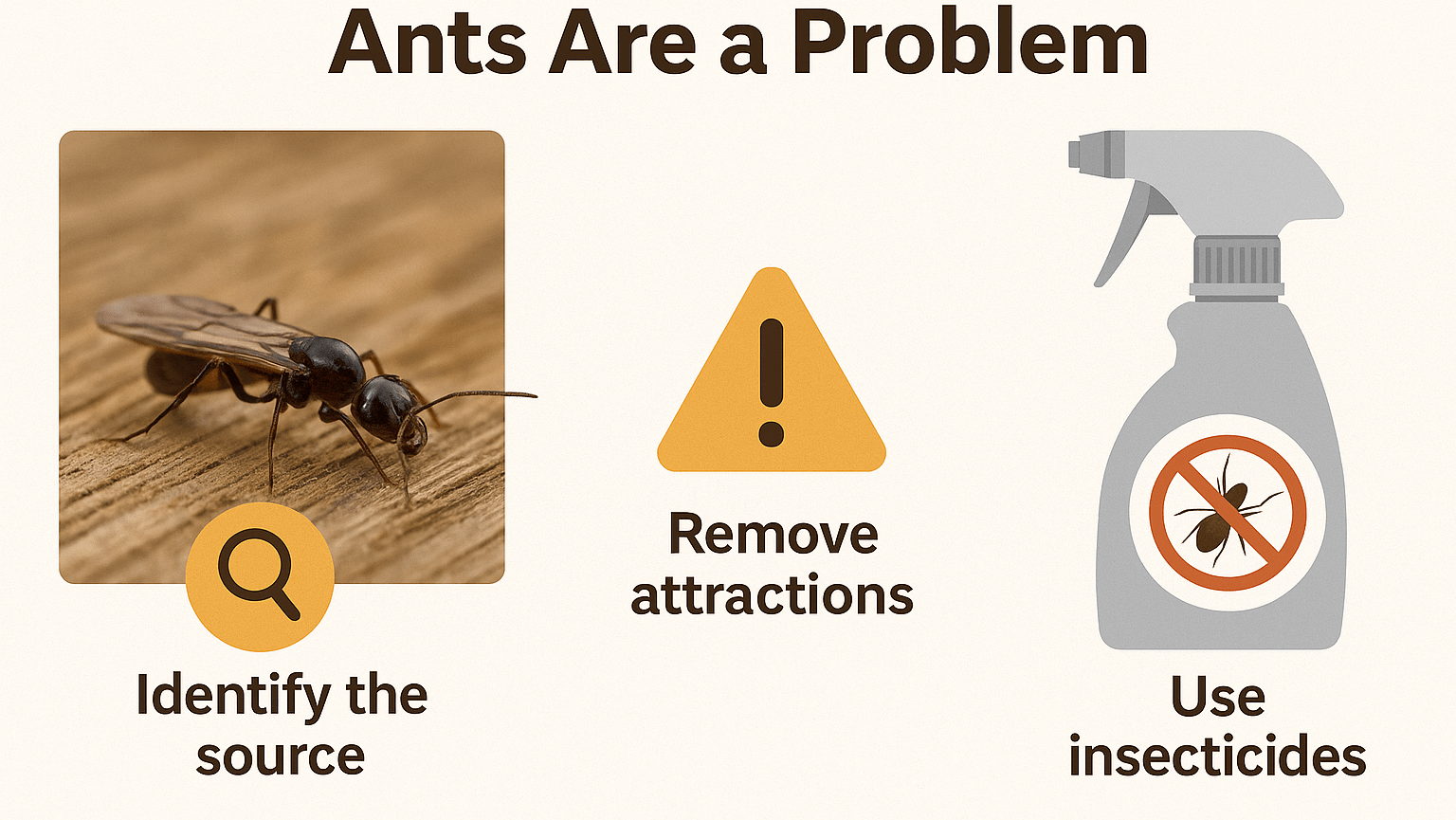
What Should You Do If Winged Ants Become a Problem?
- While flying ants themselves are not dangerous, their presence can indicate a larger ant colony nearby. If winged ants turn from a fascinating natural spectacle into a frustrating nuisance, Here’s how to prevent ants from invading your space:
-
Seal Your Home: Close cracks and gaps around windows, doors, and foundations to block ant entry points.
-
Adjust Lighting: Winged ants are attracted to bright lights—switch to yellow bug lights or dim outdoor lighting during swarming season.
-
Immediate Action: Use a vacuum or a mild soap-and-water spray to remove a few winged ants spotted indoors.
-
Find and Remove Colonies: Persistent indoor sightings may indicate a nest. Use ant baits or contact professionals to locate and eliminate it.
-
Prevent Future Problems: Keep your home dry and store food in sealed containers to make it less attractive to ants.
-
Fix Moisture Problems: Repair leaky pipes and address damp areas to reduce favorable conditions for ant colonies.
-
Maintain Outdoor Areas: Trim shrubs, remove leaf litter, and eliminate decaying wood near your home to reduce nesting spots.





